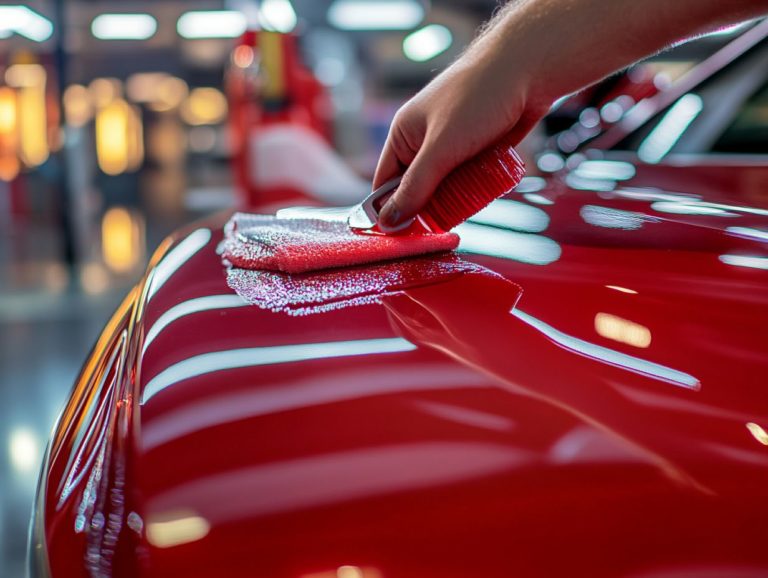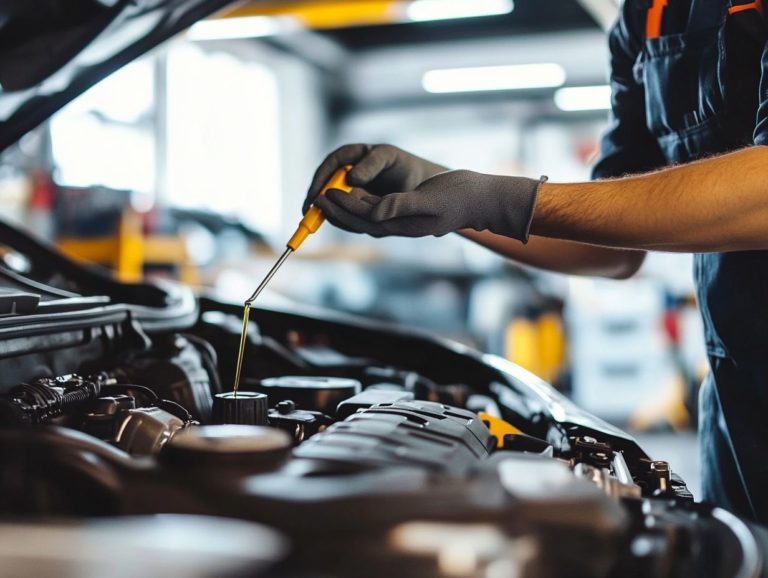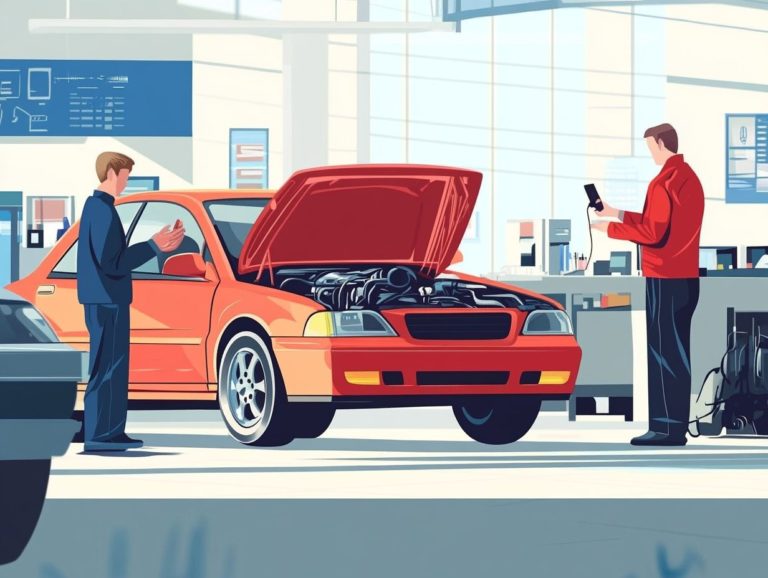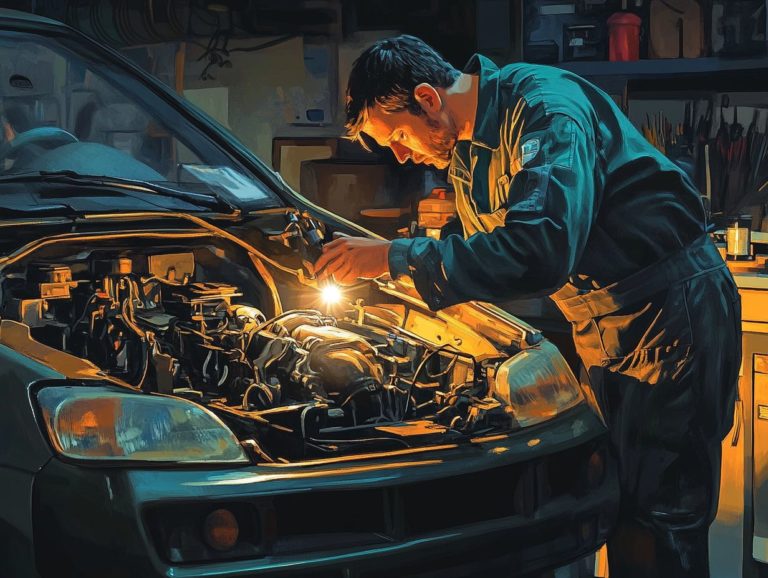The Ultimate Checklist for Seasonal Car Maintenance
Maintaining your vehicle in peak condition demands a bit of attention, particularly as the seasons transition.
This checklist outlines key maintenance tasks, from swapping out wiper blades to inspecting your brakes, ensuring that your car operates seamlessly throughout the year.
Consistent upkeep not only enriches your driving experience but also prolongs the life of your vehicle.
Jump into these must-do steps for an awesome driving experience and uncover how straightforward actions can lead to safer, more efficient journeys, safeguarding both your car and your peace of mind.
Contents
- Key Takeaways:
- 1. Check and Replace Wiper Blades
- 2. Inspect and Replace Air Filters
- 3. Check Tire Pressure and Tread
- 4. Test Battery and Replace If Needed
- 5. Inspect and Replace Brake Pads
- 6. Check and Replace Headlights and Taillights
- 7. Top Off All Fluid Levels
- 8. Check and Replace Spark Plugs
- 9. Inspect Belts and Hoses
- 10. Check and Replace Cabin Air Filter
- 11. Test Heating and Cooling System
- 12. Inspect and Replace Windshield Wipers and Washers
- 13. Check and Replace Engine Oil
- 14. Inspect and Replace Shocks and Struts
- 15. Clean and Detail the Car
- What Are the Benefits of Seasonal Car Maintenance?
- Frequently Asked Questions
- 1. What is the importance of seasonal car maintenance?
- 2. When should I perform seasonal car maintenance?
- 3. What are the essential tasks to include in the ultimate checklist for seasonal car maintenance?
- 4. Can I perform seasonal car maintenance on my own?
- 5. How can seasonal car maintenance save me money in the long run?
- 6. Is seasonal car maintenance only necessary for older cars?
Key Takeaways:

- Regularly checking and replacing wiper blades, air filters, and brake pads can improve driving visibility and safety on the road.
- Maintaining proper tire pressure and tread can improve fuel efficiency and prolong the life of tires.
- Testing the battery, spark plugs, and belts/hoses can prevent unexpected breakdowns and ensure a reliable engine.
1. Check and Replace Wiper Blades
Ensuring your wiper blades are in prime condition is crucial for maintaining visibility and the overall health of your vehicle, especially when facing adverse weather that could compromise your safety on the road.
By regularly checking and replacing these vital components, you can significantly enhance your safety. Experts suggest inspecting your wiper blades every six months and replacing them at least once a year, particularly if you notice any signs of wear, like streaking or skipping.
There are various types of wiper blades available traditional rubber, silicone, and beam blades each offering distinct advantages in durability and performance. By understanding your options and staying proactive with maintenance, you ll ensure clear visibility, paving the way for safer journeys, even in challenging weather conditions.
2. Inspect and Replace Air Filters
Regularly inspecting and replacing air filters is essential for maintaining your vehicle’s optimal performance. Clean air filters play a crucial role in enhancing engine performance and fuel efficiency.
When air filters become clogged with dust, dirt, and debris, your engine struggles to draw in the clean air it needs for efficient combustion. This not only reduces power output but also increases emissions and lowers fuel efficiency, which can lead to higher costs at the pump.
A well-maintained air filter allows your engine to breathe freely, significantly improving overall performance. Typically, it s advisable to replace air filters every 12,000 to 15,000 miles. However, if you often drive in dusty conditions or heavy traffic, you may want to check them more frequently.
Following the manufacturer s guidelines ensures your vehicle operates at its best for a longer time.
3. Check Tire Pressure and Tread
Maintaining the correct tire pressure and checking tread depth are essential practices for your vehicle’s reliability and safety, as these factors directly influence driving conditions and fuel efficiency.
Proper tire pressure ensures that your tires grip the road effectively, significantly reducing the risk of accidents arising from poor traction or blowouts. When tires are over- or under-inflated, they create increased rolling resistance, forcing your engine to work harder and ultimately diminishing your fuel economy.
To ensure optimal performance, check your tire pressure at least once a month and before embarking on long trips. Measuring tread depth is equally important; inadequate tread can compromise your handling, especially in wet conditions.
If either your tire pressure or tread depth falls short, don t wait! Address these issues promptly this may involve inflating your tires to the recommended levels or replacing those that are worn beyond safe limits. Taking these steps not only enhances your driving experience but also promotes safety on the road.
4. Test Battery and Replace If Needed
Regularly testing your vehicle s battery performance is essential to avoid unexpected breakdowns. This ensures you can count on your vehicle in critical moments.
Incorporating thorough visual inspections like checking for signs of corrosion on the terminals or leaks in the casing helps you spot potential issues before they escalate.
Using various testing methods, such as a load test (which measures how well your battery holds a charge) or multimeter readings, provides an accurate assessment of the battery’s health.
Stick to your regular check-up plan, which typically recommends replacing the battery every three to five years, depending on your usage and climate conditions.
Maintaining meticulous service records helps you track performance over time and is invaluable for future troubleshooting or warranty claims, ensuring your vehicle remains in optimal condition.
5. Inspect and Replace Brake Pads
Inspecting and replacing brake pads is crucial for your vehicle’s health and your safety on the road. Worn-out brake pads can lead to serious issues and compromised stopping power.
Regular checks are vital because neglecting your brake pads can decrease braking efficiency and potentially damage other brake system components. This could make repairs more costly in the long run.
A good rule of thumb is to inspect your brake pads every 10,000 to 15,000 miles, although it may vary based on your driving habits. If you often hit the brakes hard or drive in challenging conditions, you may need to replace them more frequently.
Be alert for signs like squeaking or grinding noises and follow your maintenance schedule to keep your vehicle safe and efficient.
6. Check and Replace Headlights and Taillights
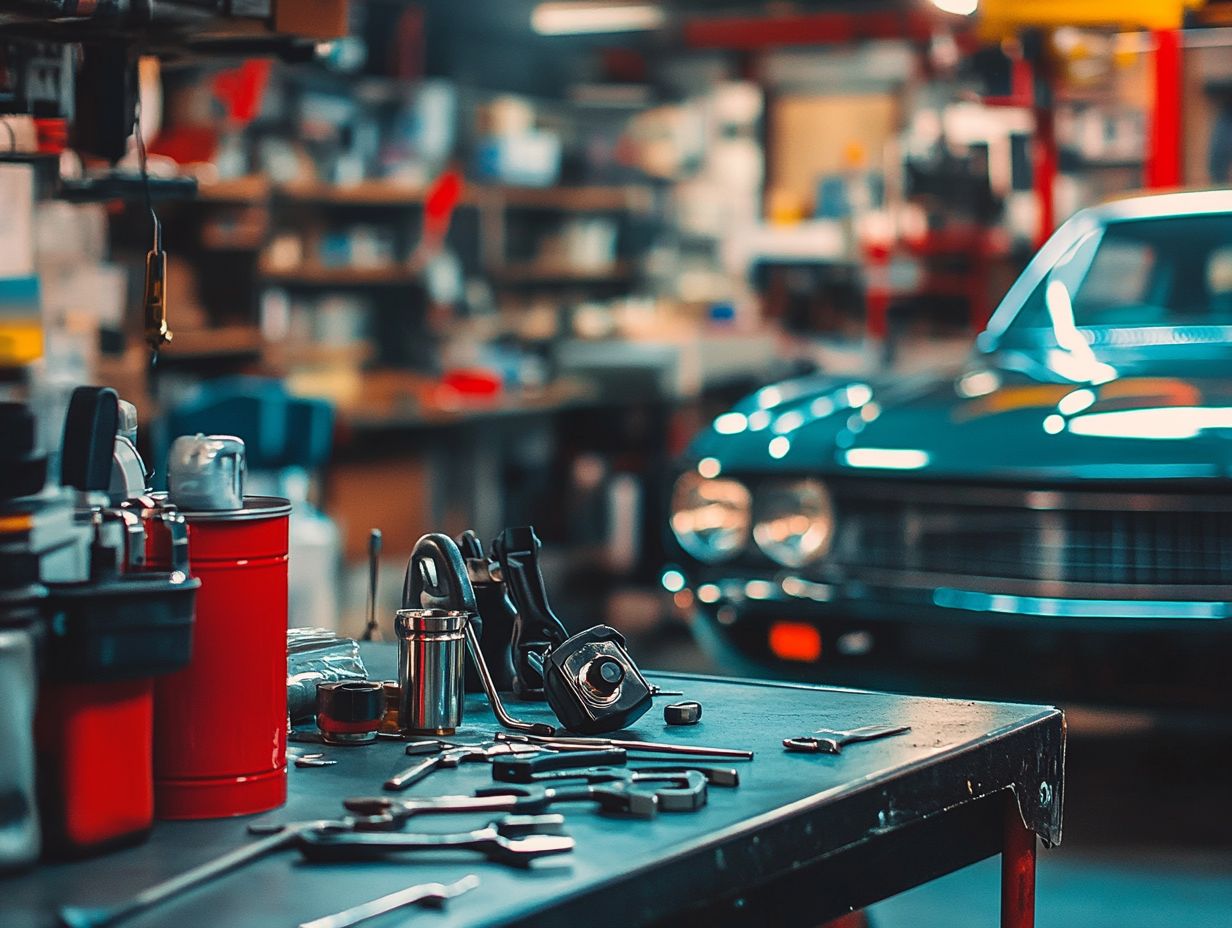
Ensuring that your headlights and taillights are functioning properly is essential for driving visibility and overall vehicle safety, especially at night or in adverse weather conditions. Regular checks are not just about your safety; they re about everyone sharing the road with you.
Start by turning on your vehicle and testing each light. Bring a friend to help check the lights from a distance, confirming that your headlights shine bright and your taillights glow as they should. If a light is out, replace it immediately to avoid dangerous situations!
When selecting replacement bulbs, refer to the manufacturer s recommendations to ensure compatibility, optimal performance, and longevity, giving you peace of mind on the road.
7. Top Off All Fluid Levels
Regularly topping off all fluid levels coolant, oil, brake fluid, power steering fluid, and windshield washer fluid is essential for preventing engine problems and ensuring your vehicle performs at its best.
Each fluid plays a crucial role in your car’s operation. For example, coolant regulates engine temperature and prevents overheating, while oil lubricates moving parts, minimizing friction and wear. Transmission fluid is key for smooth gear shifts, vital for responsive driving.
Check these essential fluids at least once a month or during routine oil changes to detect potential issues early, enhancing your vehicle s longevity.
Keep your vehicle in top shape and drive confidently!
8. Check and Replace Spark Plugs
Checking and replacing spark plugs is vital to avoid engine troubles. This ensures optimal fuel efficiency.
Worn spark plugs can cause misfires and diminish your vehicle’s performance. By regularly inspecting these crucial components, you can catch early signs of wear that signal it s time for a replacement. Look for indicators like darker coloration, cracks, or excessive buildup these can hint at underlying issues that, if ignored, might jeopardize your engine s health.
Manufacturers generally suggest changing spark plugs every 30,000 to 100,000 miles, depending on your driving conditions and the specific make and model of your vehicle. For instance, if you often drive in frequent stop-and-go traffic or tackle off-road adventures, you should schedule more regular inspections and replacements to keep your engine performing at its best. Don t wait until it’s too late!
9. Inspect Belts and Hoses
Inspecting belts and hoses is an essential part of maintaining your vehicle. Worn components can hurt your vehicle’s reliability and lead to significant engine issues.
By regularly examining these parts, you can identify potential problems before they escalate, ensuring smoother rides and reducing the risk of unexpected roadside emergencies. When visually inspecting belts, check for cracks, fraying, or heavy wear and ensure hoses are free of softness, leaks, or bulges.
It s wise to adhere to your vehicle’s maintenance schedule for replacements, typically every 30,000 to 60,000 miles or sooner if you notice any signs of deterioration. Stay alert for unusual noises or an overheating engine, as these may indicate that immediate attention is needed for these crucial components.
10. Check and Replace Cabin Air Filter
Regularly checking and replacing the cabin air filter is crucial for maintaining your vehicle’s health and ensuring pleasant air quality inside. This simple practice can significantly elevate your driving experience.
These filters trap dust, pollen, and other airborne contaminants, creating a cabin environment that enhances comfort for everyone on board. If you often drive in urban areas or regions with heavy traffic and pollution, it s wise to replace the filter every 12,000 to 15,000 miles. For lighter driving conditions, you might extend this interval to around 20,000 miles.
Regular maintenance keeps the air inside your vehicle clean and boosts the efficiency of the heating and cooling systems, ensuring that every journey is as comfortable as possible. Check your cabin air filter today!
11. Test Heating and Cooling System
Testing your heating and cooling system is essential for maintaining comfort during road trips and daily commutes. This allows you to enjoy a pleasant driving experience no matter the weather outside.
To effectively evaluate the performance of these systems, begin by checking the airflow through the vents; it should be strong and consistent. Monitor the temperature settings as well if it s getting too hot or too cold, that could signal issues with your thermostat or coolant levels. Regularly inspect the cabin air filter for clogs or dirt buildup.
If you hear any unusual noises during operation or notice the system isn t responding to your adjustments, it s prudent to consult a professional technician. This way, you can avoid further damage and ensure that your travels remain safe and comfortable. Test your heating and cooling system today!
12. Inspect and Replace Windshield Wipers and Washers
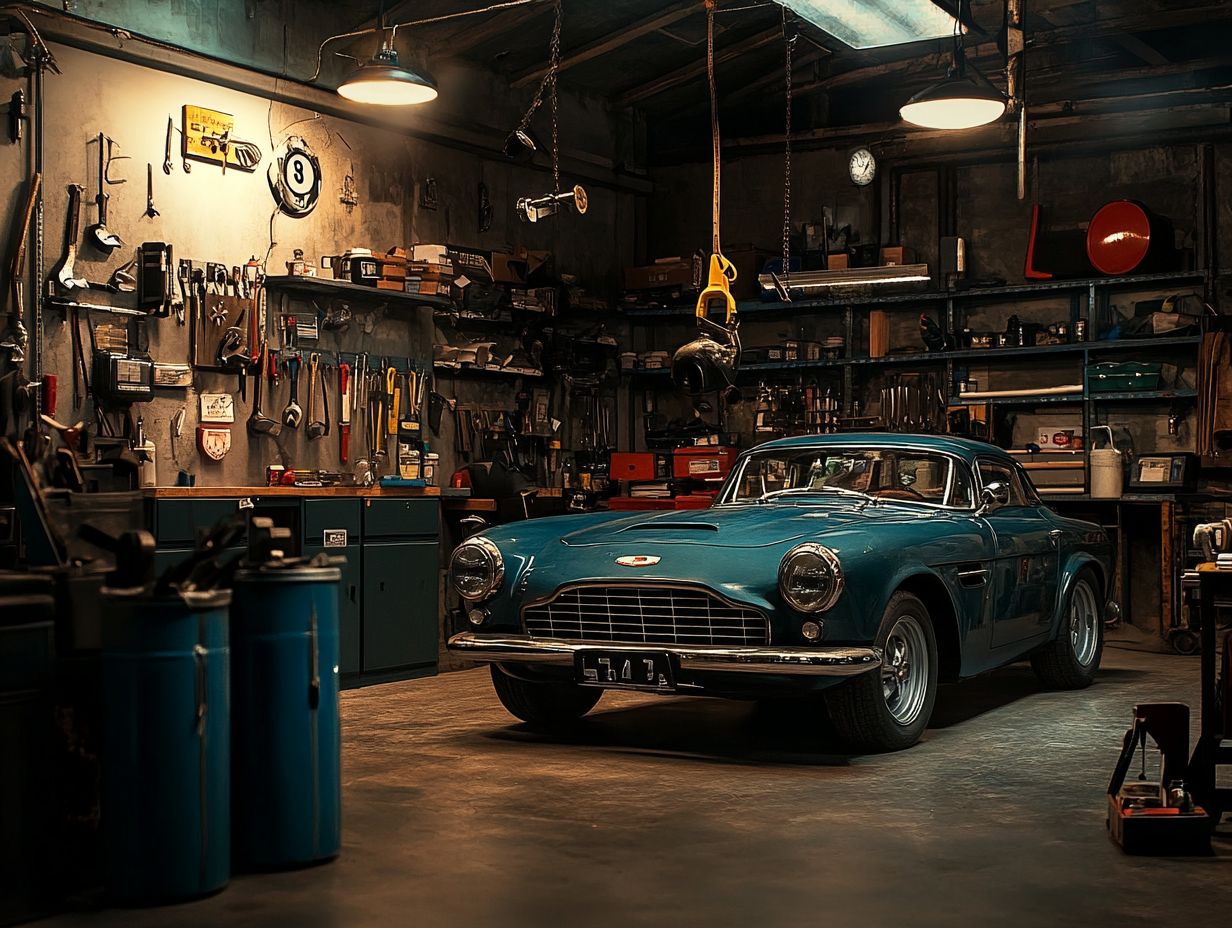
Regularly inspecting and replacing your windshield wipers and washers is essential for maintaining visibility in bad weather. This directly impacts your driving safety and your vehicle’s health.
Pay attention to key indicators that suggest your wipers may be worn out. Look for streaking, skipping, or a rubber edge that appears cracked or torn. These signs can severely impair your visibility when driving in rain or snow.
Checking your washer fluid levels regularly is also crucial. Most vehicles have a reservoir that’s easy to find under the hood. If the fluid is low, it could compromise the effectiveness of your wipers.
Replace your windshield wipers every six months to a year, especially if you often drive in harsh conditions where rain, snow, or road grime wear them down faster.
Check your wipers today to ensure you re driving safely in all conditions!
13. Check and Replace Engine Oil
Regularly checking and replacing your engine oil is key to efficient vehicle maintenance. It keeps your engine parts running smoothly and prevents wear and tear.
Always follow the recommended oil change intervals in your vehicle’s maintenance schedule. This can differ based on the make and model of your car. If you often take short trips or drive under extreme conditions, you might need to change the oil more often.
Knowing how to check your oil levels is essential for keeping your engine in top shape. It’s a simple task you can perform using the dipstick located in the engine bay.
Choosing the right type of oil whether synthetic or conventional is just as vital. This choice ensures your engine performs well and enjoys a longer lifespan.
When was the last time you checked your engine oil?
14. Inspect and Replace Shocks and Struts
Don’t wait! Inspecting and replacing your shocks and struts can keep you safe on the road. Worn components can compromise handling and increase stopping distances.
Regular assessments of these vital parts are necessary to identify wear before it escalates into bigger problems. Look out for signs like fluid leaks, visible damage, or a bouncy ride. These all suggest that a replacement might be on the horizon.
If your vehicle pulls to one side while driving, that could also indicate issues with your shocks or struts. It’s generally advisable to inspect these components regularly, especially if you navigate rough terrains or often drive heavy loads.
By taking these proactive steps, you can enhance both your vehicle s longevity and your safety on the road.
15. Clean and Detail the Car
Regularly cleaning and detailing your car not only improves its appearance but also shields its components from the detrimental effects of dirt and grime.
Maintaining a clean vehicle preserves its resale value and offers a safer driving experience. A thorough interior cleaning removes allergens and odors, creating a more pleasant environment and reducing wear on your upholstery.
For the best results, use the right products: choose pH-balanced cleaners for the exterior, which are gentle on surfaces, and gentle upholstery cleaners for the interior. Schedule detailing every three to six months, but don’t underestimate the power of a quick wash or vacuum every few weeks to keep dirt at bay.
Regular detailing can significantly boost your car’s resale value!
What Are the Benefits of Seasonal Car Maintenance?
Seasonal car maintenance keeps your vehicle reliable. It tackles challenges from changing driving conditions, whether you face extreme temperatures or plan a road trip.
By regularly checking and servicing critical components, you significantly enhance your safety on the road. For instance, during the winter months, inspecting your battery and antifreeze the liquid that helps prevent your car’s engine from freezing can save you from unexpected breakdowns. In the summer, it s wise to check the cooling system to prevent overheating during those long drives.
A thorough examination of your tires every season especially rotations and pressure checks can lead to improved gas mileage and a smoother ride. Engaging in these preventative measures can reduce repair costs over time, experience fewer emergencies, and ultimately extend the lifespan of your vehicle.
Frequently Asked Questions
1. What is the importance of seasonal car maintenance?

Seasonal car maintenance is crucial for ensuring the optimal performance and safety of your vehicle. It helps to prevent breakdowns, identify potential issues early to avoid costly repairs later, and prolong the lifespan of your car.
2. When should I perform seasonal car maintenance?
Make seasonal car maintenance a priority! Do it at least twice a year, before winter and summer, to keep your car in top shape and adjust to changing weather conditions.
3. What are the essential tasks to include in the ultimate checklist for seasonal car maintenance?
The ultimate checklist for seasonal car maintenance should include tasks such as:
- Checking and changing the oil
- Inspecting and replacing air filters
- Checking the battery and charging system
- Inspecting tires and brakes
- Checking all fluid levels
4. Can I perform seasonal car maintenance on my own?
While some maintenance tasks can be done by car owners themselves, it is always recommended to have a professional mechanic perform seasonal car maintenance. They have the expertise and equipment to thoroughly inspect and service your vehicle.
5. How can seasonal car maintenance save me money in the long run?
By regularly performing seasonal car maintenance, you can identify and address potential issues before they turn into costly repairs. It also helps to improve your car’s fuel efficiency and overall performance, saving you money on gas and preventing premature wear and tear.
6. Is seasonal car maintenance only necessary for older cars?
No, seasonal car maintenance is important for all cars, regardless of their age. Even newer cars can benefit from regular maintenance to ensure they stay in top condition and continue to run smoothly.


